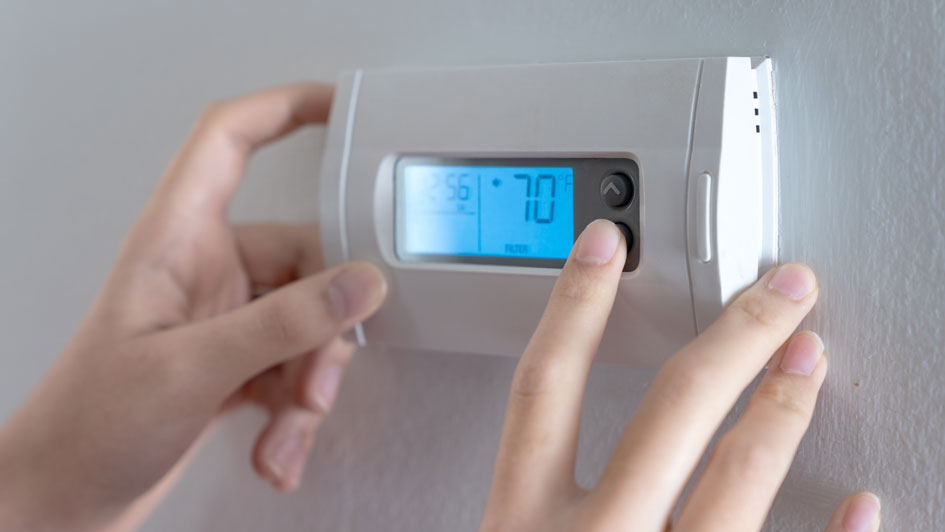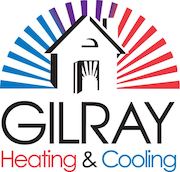
Everyone’s always looking to save money on their utility bills, but it just so happens there’s a way to lower energy use, even when you're not even home.
It starts with your thermostat. By making the most out of your thermostat, you can tailor the temperature to your needs. You can create a number of automated temperature settings for when you’re home, away or even when you’re asleep.
If you're willing to make these adjustments, you have more time to enjoy pleasant temperatures while cutting down your energy bills. Check out our guide on how your thermostat can be a source of energy savings:
While at Home
When you’re home, you want to enjoy a comfortable temperature. It's only natural to want your thermostat lower in the summer if you're indoors to make the most of the cool air.
But in terms of energy efficiency, the best range for the summer is in fact anywhere between 78 and 80 degrees Fahrenheit. By adjusting things a few degrees, you'll avoid the worst of summer while still keeping your energy bills low.
While Away
When setting the temperature for whenever you're gone, the majority of homeowners will set the thermostat higher for while they're gone.
If your home is in a shady spot in a cooler climate, you can set the temperature as high as 88 degrees while no one is home before lowering it back to the sweet spot of 78-80 degrees once you're home again. This way, your air conditioning won't have to work constantly to keep an empty house cool.
While Asleep
When it comes to sleeping in the summer, you want your thermostat set at a comfortable temperature. A great place to start is between 68-72 degrees Fahrenheit. This will keep you from getting too hot or too cold while you're trying to sleep.
Other Strategies for Lowering Energy Use:
- Smart thermostat installation: Switching to a smart thermostat in the summer can lower energy costs since it can plan your temperature adjustments according to your lifestyle and idea of what comfortable is. It'll take care of making changes while you are home or sleeping, before allowing it to get warmer when the house is empty. With reliable brands like the Lennox iComfort, you can adjust the temperature remotely through your smartphone, tablet or laptop. Scheduling smart thermostat installation in your Wausau home can be the simplest strategy for maintaining comfortable, yet energy-efficient temperatures even when you aren’t home.
- Update your existing HVAC system: Upgrading your HVAC system saves money right from the start. If a system boasts high energy efficiency, lower utility bills won't be far behind since it requires less energy to reach your preferred temperatures. Air conditioning installation in Wausau is only a phone call away, so don't hesitate to reach out to local pros like Gilray Heating and Cooling who can set you up for success.
- Stay on top of routine AC maintenance: Whether or not you keep up with regular air conditioning maintenance in Wausau can have a serious effect on your total monthly energy use. By regularly cleaning the coils, checking for damage and clearing air vents of dust and debris, you may notice your HVAC system run more efficiently. Higher energy efficiency will also reduce strain on the unit and lowers operational costs, resulting in lower energy usage and subsequently, smaller bills.
- Clean or replace the air filter on a regular basis: A regular schedule for cleaning or replacing the HVAC system's air filter saves money by improving airflow. When filters are clogged with dirt and debris, your air conditioner will have to work harder, and this greater strain could shorten the system’s life span and result in breakdowns.
- Confirm your attic is sufficiently insulated: Insulation is a vital part of maintaining an energy-efficient home, keeping the hot air outside and the cool air inside over the summer. The North American Insulation Manufacturers Association (NAIMA) offers an official recommendation stating homeowners in souther states should possess at least 13-14 inches of insulation, while states further north need 16-18 inches.
- Inspect your ventilation: Leaky ductwork can raise your energy bills much more than 20 percent, plus it can also lead to problems with your water heater, clothes dryer and other appliances to get into the atmosphere of your home. Finding any leaks fast and sealing them can address both concerns.
- Seal all other leaky spots in your home: Sealing up other leaks in your home with caulk, foam sealant or weather-stripping keeps temperatures a little cooler on hot summer days. It’s also important to check for any gaps around windows, doors and even outdoor fixtures. Making time to seal leaks now can help you save a lot over time.
